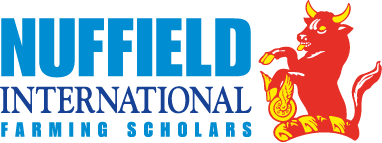Report Synopsis
Opportunities for Canadian Beef in International Markets
Ellen Crane
When was the last time you purchased a beef product in a grocery store? For many beef producers, purchasing grocery store beef is not a regular activity, and they may be removed from some of the current realities of consumer demands. The modern consumer has become increasingly conscious about the products they purchase. Is it good for me? Is it good for the environment? These are just a couple of attributes of beef production a consumer may consider when making purchase decisions. This consideration led to the topic of my Nuffield Canada study “which attributes of beef production is the international consumer willing to pay for? What production changes can be made in Canada to leverage consumer marketing in export markets?”
Taking into consideration the upcoming trade deals for Canada and the type of consumer we would be targeting, my travels would take me to the Netherlands, Scotland, England, Denmark, Northern Ireland, the Republic of Ireland, France, Italy, Hong Kong, Japan and the United States and visits across Canada. My objectives during this travel were to consider a) What were the attributes of beef production in these countries that consumers have shown value for? What are they buying? And b) How is the value from the consumer reflected in beef production within these countries?
The values of the consumers that are purchasing Canadian beef products are as diverse as the consumer themselves. The customer has voted with their dollars and chosen to consume beef. Some common themes of consumer desires across various countries include:
- Price: The price needs to reflect product value.
- Food Safety: This is a primary concern regardless of what the customer is purchasing.
- Quality: If the product is going to be labelled with a premium price the product needs to match that price.
- Provenance: If a story is used to describe how the product was produced it needs to be able to be proven.
- Presentation and labelling: need to indicate quality and value.
My recommendation for the industry is to encourage beef producers to enhance the keeping of on-farm records and to ensure best management practises are used. By doing so, this will increase the number of beef cattle available for existing Canadian verification systems including VBP+ and the CRSB certified sustainable program. For the products that are marketed locally and internationally, enhanced product labelling will ensure the consumer is aware that the product was raised sustainably (economically viable, environmentally sound and socially responsible). Including a sustainable label will require efforts through product branding to ensure the consumer knows that the claims such as sustainability are verifiable in Canadian products.
Similar Reports
- 2023
Maximising Efficiency and Performance: A northern Australian beef producer perspective on best practices for pre-entry cattle management and preparation
Jarrod Cook - 2022
Managing Pastures for Seasonal Variability
Jesse Moody - 2022
Opportunities to make Australia’s northern beef industry more productive and resilient
Munro Hardy - 2022
Toward Sustainable Livestock: Integrating Domestic Feed and Exports
Shinya Okazaki
